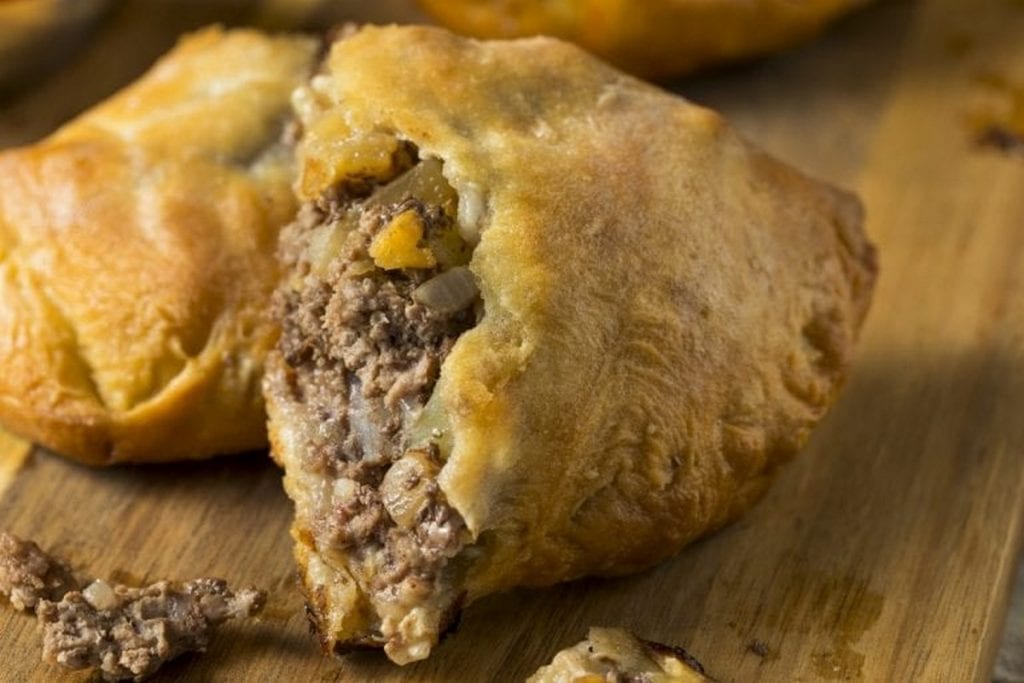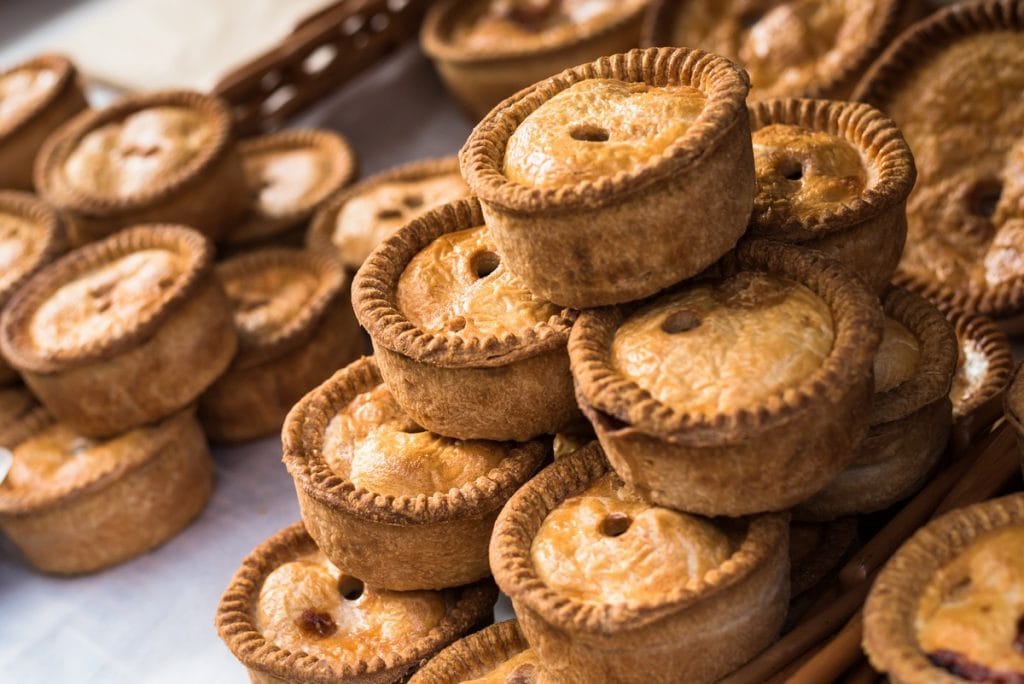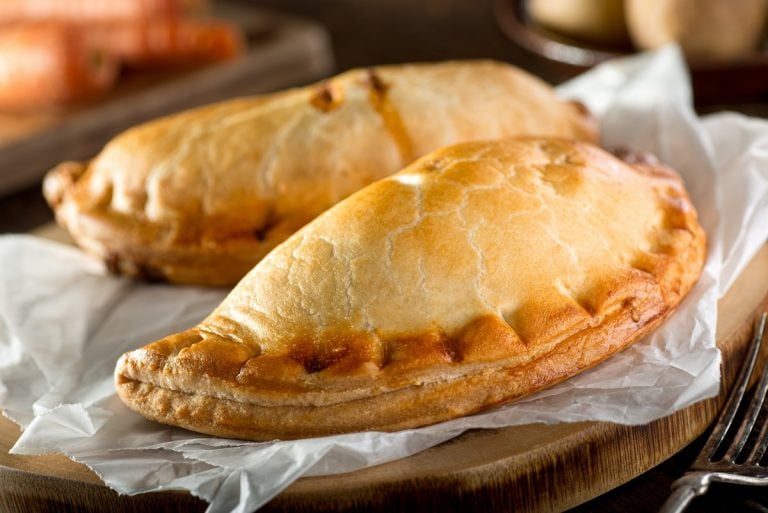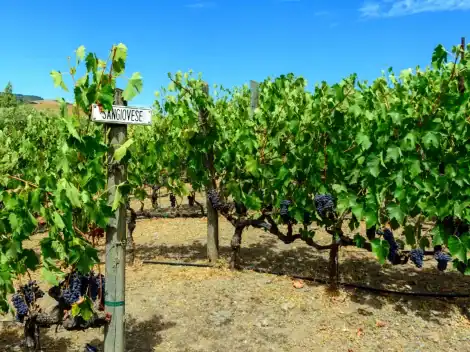Street food in the UK
Options today are plentiful, especially in big cities, but the UK doesn't have a long history of street food. In addition to famous fish and chips, there's bundles of brisée or puff pastry called sausage rolls but also ham and cheese pies, shells filled with onion and Cheddar, and then Cornish pasty, which is a delicious pastiche with the most varied fillings. Kiosks with similar products are ubiquitous in British tube stations, where you can buy a quick bite before departure. Without forgetting rustic pies that contain tasty meat with vegetables or sweet ingredients. Here are three street foods you can't miss.

Cornish pasty, the miners' meal
A specialty perhaps little known outside national borders, but strongly rooted in British food culture: literally, the name pasty can be translated as "bundle" and it is in fact a shell of pastry generally filled with meat and vegetables. The story begins in Cornwall, south-west of England: initially the meal of the nobles, pasties (also called oggies) became famous thanks to fishermen, farmers, all the hardest workers who found comfort in a hearty bundle that could keep for a long time. In particular, it is to the miners that we owe their diffusion in the world as well as their particular shape. The wives prepared them with a thicker and curled edge to allow men to eat it safely, avoiding contamination. In fact, they heated the pasties with a lit candle under a tin bucket and ate them with their hands, finally throwing away the side crust soiled with copper and tin dust. Puff pastry pasties were an integral part of the British diet as early as the 13th century, when they were especially popular among the wealthier classes and nobility, who enjoyed them with various fillings: venison, beef, lamb and even fish, especially eels. All enriched with fruit and gravy, the typical Anglo-Saxon sauce made with the cooking juices of the meat seasoned with aromatic herbs, spices and broth.
The filling of Cornish pasty
Even today, the traditional shape of the pasty has the same raised edge, thick and fragrant, just like the one used by miners to hold everything together. The fillings vary according to the area and the inspiration of the cook, but the most classic is the one filled with beef, potatoes and turnips which, cooked together (directly in the pastry), form a rich and tasty cream, enclosed in a crumbly crust. However, it is very probable that in the past the fillings were purely vegetable-based, considering the high cost of meat in the 18th century. Regardless of the filling – which was once also found in a sweet version – in Cornwall pasties have always represented an iconic dish, so much so that during the most important rugby matches a giant one is suspended above the bar before the start, as a sign of good luck. Speaking of giant pasties: the biggest ever – over 9 metres! - was prepared in 1985 by the Cornish Young Farmers, a community of farmers and artisans dedicated to young people between the ages of 10 and 26 who want to learn a trade and create a network of contacts with other local youngsters.

Fish and chips, the symbol of British cuisine
Tracing the origins of fish and chips is not easy. Chips seem to have been invented in Belgium in the 17th century, to compensate for the lack of fish during the frosts of the Meuse river. The fishermen's wives got into the habit of frying potato slices cut lengthwise in order to recall the shape of the fish. In the same period, batted fish appears for the first time in Great Britain, introduced by Jewish refugees arriving from Portugal and Spain. A dish that was immediately conceived as street food, served by street vendors on large trays hung around the neck, and which achieved immediate success. Democratic and within everyone's reach, battered and fried fish was appreciated by all, even the less well-off social classes. According to legend, it was a well-known entrepreneur from the North, John Less, who paired it for the first time with chips in the second half of the 19th century, but there are others who maintain that it was instead Joseph Malin, a resident of East London, who opened the first fish and chip stand in 1860. A story that is also intertwined with Italian immigrants: it was they, in fact, who identified the potential of the dish, thus starting to open shops also in Scotland, Wales and Ireland. In particular, it is said that it was Giuseppe Cervi who started business in Dublin at the end of the 19th century.

Pork pies, an ancient treat
The United Kingdom has a long tradition of pies, savoury baked preparations of fragrant dough filled with meat and vegetables or other ingredients. The first written trace of the term pie dates back to 1303 and is found in the Oxford English Dictionary. According to Alan Davidson, author of the Oxford Companion to Food, it is a word whose meaning "has evolved over the centuries, and which to some extent varies by country or even by region." Probably, it derives from magpie, the bird that "collects various things, the main characteristic of the first cakes which contained a great variety of ingredients." The most classic of all savoury pies, however, is the pork pie. The first similar recipe appears in a mediaeval manuscript, "The Forme of Cury," attributed to the court cooks of Richard II and published around the end of the 14th century. British historian Andrew Pettegree believes the earliest version was known as pig pye, containing pork and spices. Even today, the filling generally involves the use of onion and various aromatic herbs such as thyme and sage, as well as pepper, nutmeg and mace, the coating of the nutmeg seed.
Recipe for Cornish pasty
For the official recipe of the Cornish pasty, we relied on the Cornish Pasty Association, an association created by artisan producers in the United Kingdom who have joined forces to promote and protect the product.
For the crust
500 g. Strong flour (250-320 W)
120 g. Lard or margarine
125 g. Butter
1 tsp Salt
175 ml cold water
For the filling
400 g. Pork loin, cubed
300 g. Potatoes, peeled and cubed
150 g. Rutabaga
150 g. Onion, sliced
Salt and pepper to taste
1 egg, beaten
In a bowl mix salt and flour, add the lard or margarine to obtain large clumps. Add the water and knead until the dough is soft and elastic. Cover with plastic wrap and leave to rest for 3 hours in the refrigerator. Once rested, roll out the dough and cut into circles about 20 cm in diameter. Arrange the vegetables and meat on the discs with salt, pepper and other spices to taste. Close the pastry dough to obtain a crescent shape and curl the edges. Brush the beaten egg on the pastry and bake in a ventilated oven at 165°C for about 50-55 minutes, until the pastry is well browned.
by Michela Becchi


 “In Chianti, warehouses are full and prices are falling”. The economic crisis of Tuscan wine explained by Giovanni Busi
“In Chianti, warehouses are full and prices are falling”. The economic crisis of Tuscan wine explained by Giovanni Busi US tariffs will take effect on 1 August for everyone (including wine). Prosecco DOC: “it’s impossible to plan for the future
US tariffs will take effect on 1 August for everyone (including wine). Prosecco DOC: “it’s impossible to plan for the future Diego Rossi of Trippa opens a new osteria: what you can eat at Nino Osteria con Cucina in Milan
Diego Rossi of Trippa opens a new osteria: what you can eat at Nino Osteria con Cucina in Milan How you eat at Sentiero, the restaurant Elba Island was missing
How you eat at Sentiero, the restaurant Elba Island was missing






